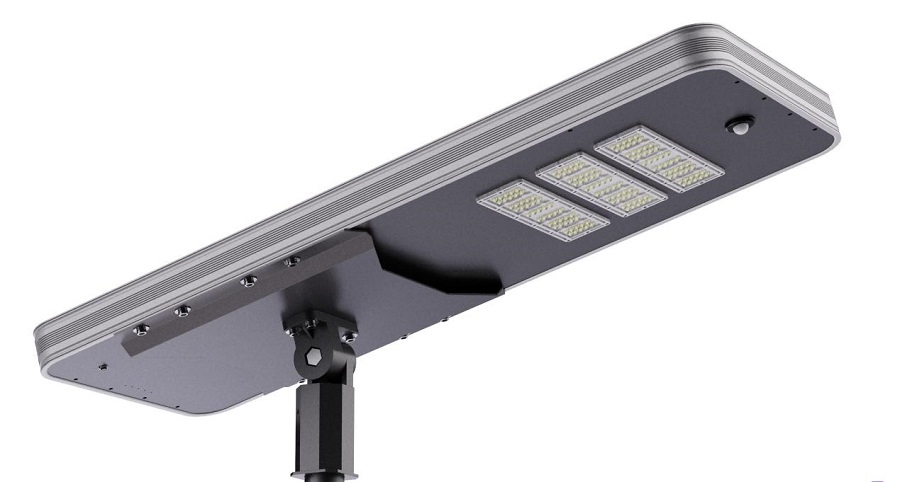—— Assisting Customers in Precise Model Selection to Create an Efficient and Energy-Saving Lighting Solution
With the popularization of solar energy technology, solar street lights have become the top choice for lighting in urban roads, rural areas, scenic spots, and other scenarios due to their advantages such as environmental protection, energy conservation, convenient installation, and low maintenance costs. However, faced with a wide variety of products on the market, how to select the right model scientifically has become a key concern for customers. This article will provide customers with a comprehensive model selection guide from the dimensions of performance configuration, durability, and scene adaptation.
I. Core Performance Configuration: Meeting Basic Lighting Requirements
1. Light Efficacy and Illuminance Adapted to Scenarios
◦ Light Efficacy (Lumen/W): The higher the light efficacy, the stronger the brightness under the same unit energy consumption. It is recommended to select light efficacy parameters according to the application scenarios. For example, the main road requires ≥120LM/W, and for residential areas or courtyards, 80-100LM/W can be selected.
◦ Illuminance (LUX): There are significant differences in illuminance requirements for different scenarios. For example, the expressway requires ≥30LUX, and for rural roads or scenic area footpaths, it can be reduced to 10-20LUX.
2. Matching of Solar Panel and Battery Capacity
◦ Solar Panel Power: It is necessary to select according to the average annual sunshine duration in the local area. For example, in areas with 4 hours of sunlight per day on average, it is recommended that the power of the solar panel is ≥60W.
◦ Battery Type and Capacity: Give priority to lithium iron phosphate batteries (long cycle life and good low-temperature performance), and the capacity should meet the power supply during rainy and cloudy days (such as 3-5 days).
3. Functions of the Intelligent Controller
◦ The controller should have dual modes of light control and time control, and support multiple protection functions such as overcharge protection, over-discharge protection, and anti-reverse connection protection to extend the battery life.
II. Quality and Durability: Ensuring Long-Term Stable Operation
1. Materials and Processes
◦ Lamp Pole: It is preferred to use hot-dip galvanized steel or aluminum alloy materials, with a thickness of ≥3mm, and the wind resistance grade should reach above level 10.
◦ Lamp Housing: Cast aluminum material + IP65 protection grade to ensure water and dust resistance.
2. Heat Dissipation and Light Decay Control
◦ The LED lamp beads should be equipped with an efficient heat dissipation structure (such as fin design) to avoid the acceleration of light decay caused by high temperature, which will affect the service life.
3. Environmental Adaptability
◦ In high-cold or high-temperature areas, weather-resistant materials should be selected, and it is necessary to ensure that the battery has a wide operating temperature range (such as -20°C~60°C).
III. Scenario-based Model Selection: Optimizing Configuration According to Local Conditions
1. Rural Areas
◦ Priority on Brightness: In an environment without auxiliary lighting, high brightness (≥8000 lumens) is required to cover a large area.
◦ Resistance to Harsh Environments: Select an IP67 protection grade and rust-proof materials to adapt to dusty and rainy environments.
2. Scenic Areas and Urban Landscapes
◦ Appearance Coordination: The design of the lamp pole should be unified with the style of the scenic area, and antique, modern, and other shapes can be customized.
◦ High Reliability: In areas with a large number of people, a maintenance-free design should be selected to reduce the failure rate.
3. Courtyards and Footpaths
◦ Low-power Energy-saving Type: Select 20-40W lamps, equipped with soft light lenses to balance lighting comfort and energy conservation.
IV. Services and Guarantees: Avoiding Later Risks
1. Brand Reputation and Certification
◦ Give priority to brands that have passed CE and RoHS certifications to ensure that the products meet international safety standards.
2. After-sales Service System
◦ Confirm the warranty period (it is recommended to be ≥3 years), and understand the fault response speed and the ability to supply spare parts.
Post time: Mar-27-2025

